Painting the Bhagavad Gita - Dilemma
Dilemma - a painting depicting the moral dilemma of Arjuna in the Bhagavad Gita
As part of our 200hr training we ask our students to develop a relationship with the Bhagavad Gita and share their findings. Knowing that long essays don't work for everyone, we adapt our coursework procedures to suit different learning styles.
We invite our trainees to express their understanding in a way that means something for them. Karen amazed us all by choosing to express her assignment on the scripture in the form of a painting she titled Dilemma.
Below are some words from Karen to accompany her painting.
“My painting depicts the moral dilemma and despair of Arjuna. Placed on the ‘field of action’, a battleground for moral struggle.
I read a number of versions of The Bhagavad Gita, including one by Eknath Easwaran, the Penguin classic by Juan Mascaro, a children’s illustrated version by A.C. Bhaktivedanta Swami Prabhupada, and the audio book ‘A walk through for Westerners’ read by Jack Hawley. ‘When love comes to light- Bringing wisdom from the Bhagavad Gita into modern life’ by Richard Freeman & Mary Taylor resonated with me most, and this was what I based my painting on.
The left side of the painting shows the torment that Arjuna feels with the thought of having to go into battle and not wanting to kill friends and family. Chapter 2 gives an account by Arjuna of what it feels like to be ripped apart; mentally, emotionally and physically.
‘My limbs sink down, my mouth dries up, my body trembles, and my hair stands up on end. Gandiva (the bow) drops from my hand and my skin is burning all over. I am not able to stand steady and my mind is flying about.’
The vivid account by Arjuna can be familiar to any of us when we have to face a crisis of conscience.
The right side of the painting then depicts after Krisna teaches Arjuna to see. Discovering that selflessness is the only way to progress and prosper, Arjuna is now able to look beyond his own ego. The clearer and brighter colours showing there is hope and a future out of this dilemma.
I have depicted Arjuna as ‘The Tree of Life’, representing his personal development, uniqueness and individual beauty. Just as the branches of a tree strengthen and grow upwards to the sky, we too grow stronger, striving for greater knowledge, wisdom and new experiences as we move through life.
According to this version by Freedman and Taylor the ‘Bow’ and the ‘Conch shell’ are important symbols. The ‘Bow’ represents the tuned body and mind. Body tuned through asanas, meditation, Pranayama which clears the mind, making the mind more precise in thought, sharpening the arrows of intelligence and concentration. The symbol of the ‘Conch shell’ in tradition indicates the beginnings or endings of many things. The blowing of a conch shell requires focus and a long smooth exhalation of breath. It is impossible to blow without becoming absorbed in the physical sensation that spontaneously occurs throughout your body. Vibration of sound and the grounding effect of the exhalation of breath itself. Whether blowing or listening to the sound of the conch has the effect of bringing us into the present moment. It shows us the importance of trusting our fuel (prana). For me, the right side of the painting represents Yoga, Pranayama, Meditation (8 limbs of Yoga).
Today we can feel the push and pull of dilemma. The struggles we encounter. The decisions that we have to make to be able to move forward. The teachings we endure. The dilemmas of life (left side of the painting) and ultimately that compassion and love are the answer (right side of the painting). True love is tenderness, mercy, forgiveness and the capacity to see others for who they really are rather than our narrative of who we think they are. Like Arjuna we may become immobilised by overwhelming uncertainty or by the thought of having to act in a way that goes against what we feel is our true nature. By actively participating in the interwoven process of the mind, body and spirit within our own storyline we find hope and a chance not only to create our own happiness but also to contribute to the happiness of others. The right side of the painting depicting for me how clear ‘Yoga’ makes me see and the strength it gives me through my mind and body. Clearing my mind and body from all the confusion (my own dilemmas).
Karen Ward 200hr Hatha and Restorative Trainee
